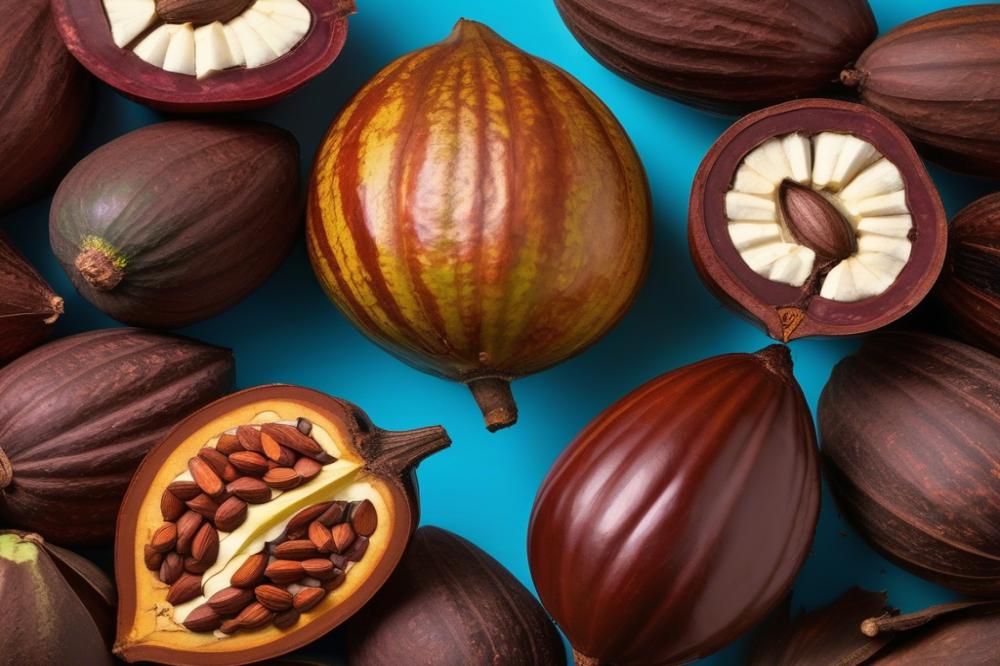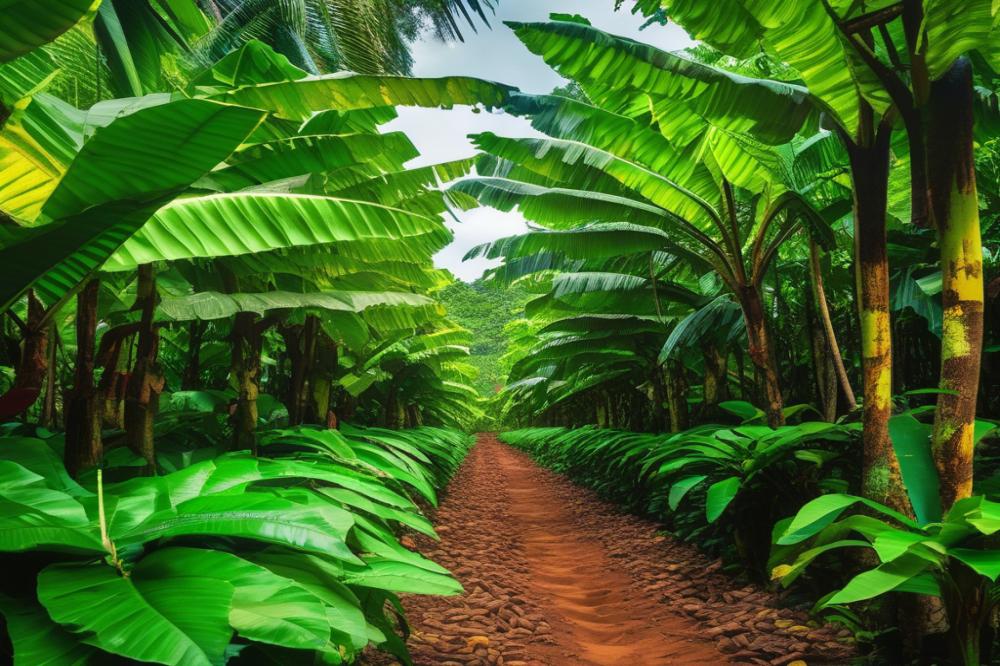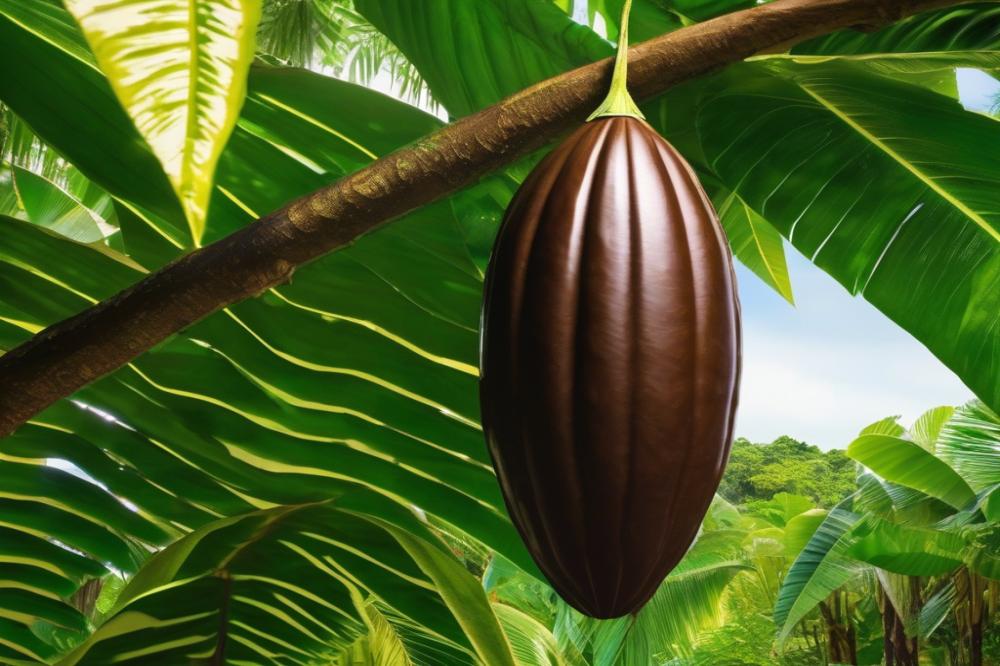Introduction
The Cocoa plant, known scientifically as Theobroma cacao, is at the heart of one of the world’s favorite treats—chocolate. What many may not realize is that this beloved plant plays a crucial role in the economies of several tropical countries. Cocoa is not only a source of income for farmers but also a significant agricultural commodity. The production of cocoa beans impacts global markets and influences the livelihoods of millions.
Cocoa production is vital for many regions, particularly in West Africa, Latin America, and Southeast Asia. These areas contain the majority of the world’s Cocoa plantations. As demand for chocolate continues to rise, the need for effective and sustainable cultivation practices becomes more pressing. Farmers face challenges such as climate change, pests, and diseases, making the methods of cocoa plant growth increasingly important.
Understanding Cocoa Propagation is essential for improving crop yields and maintaining genetic diversity within the species. The choice between grafting techniques and direct sowing of cocoa seeds can greatly affect a farmer’s success. Each method has distinct advantages and challenges, which can influence overall production. This article seeks to explore the merits of different propagation methods, specifically focusing on the debate of Grafting vs. Seeds.
Through examining various horticultural techniques, farmer practices, and ongoing plant breeding initiatives, we will shed light on how these methods shape the future of cocoa cultivation. Ultimately, effective nursery management and informed choices in propagation can lead to healthier cocoa trees and, consequently, more robust cocoa production.
Cocoa Propagation

Definition of Propagation Methods
Propagation methods refer to ways of growing new cocoa plants. These can include planting cocoa seeds or using grafting techniques. Each method has its own advantages and challenges. Understanding these options is vital for anyone involved in cocoa farming.
Importance of Effective Propagation in Cocoa Cultivation
Effective propagation plays a crucial role in successful cocoa cultivation. Healthy young plants lead to strong cocoa tree growth. This growth directly affects cocoa production levels. Farmers must also consider genetic diversity. A diverse plant stock can offer resilience against pests and diseases. It can lead to higher yields over time. Therefore, strong nursery management practices are essential. Good management ensures that the best plants are produced from seed or grafting.
Overview of Cocoa Tree Growth and Its Impact on Production
Cocoa trees grow best in tropical climates. Their growth stages range from seedlings to mature trees. During the initial stages, good care and specific horticultural techniques are necessary. Proper nutrition and moisture are critical for establishment. Once they mature, cocoa trees can yield their prized pods. Factors such as plant breeding influence the quality and quantity of the cocoa beans. Successful production demands ongoing attention to the methods used. Choices made at the propagation stage can have lasting effects on farm productivity. Every detail matters in the journey from seed or graft to cocoa pod.
Cocoa Seeds
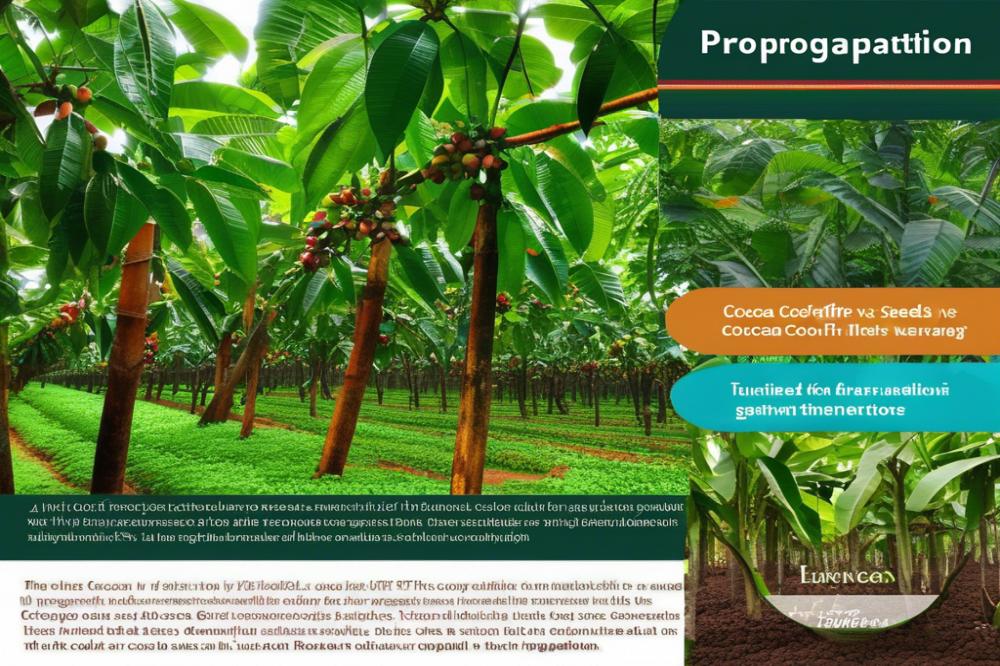
Cocoa seeds are a fundamental propagation method for cocoa plants. These seeds play a crucial role in the early stages of cocoa tree growth. Farmers often rely on seeds to cultivate new trees from mature plants. This process starts in the cocoa pod, where seeds are nestled among the sweet pulp.
Process of Seed Extraction and Preparation
Extracting seeds requires careful handling. First, pods are harvested from cocoa trees. After this, the seeds must be removed from the pulp. The pulp can be discarded, while the seeds need proper washing to prevent mold. Next, seeds are dried for several days to improve their viability.
Advantages of Using Cocoa Seeds for Propagation
Using seeds for propagation has several benefits. Seeds are widely available from existing trees. This method promotes genetic variety, resulting in plants that can adapt better to environmental changes. Additionally, seed propagation often requires fewer resources compared to grafting techniques.
Challenges and Limitations of Seed Propagation
Despite its advantages, seed propagation has its downsides. Seeds can take a long time to grow into mature trees. It might take about three to five years before they yield cocoa beans. Also, not all seeds produce plants with the same characteristics as their parent trees. This can lead to inconsistencies in cocoa production.
Impact on Genetic Diversity in Cocoa Plants
Genetic diversity is essential for the resilience of cocoa plants. When seeds are sourced from various individuals, they contribute to a more heterogeneous crop. This diversity can enhance disease resistance and improve overall yield. However, relying solely on seeds can lead to a loss of specific traits found in high-performing trees if not managed carefully.
Incorporating good nursery management practices is vital for maximizing success with cocoa seeds. Choosing the right parent plants can help maintain beneficial genetic traits. Overall, there are significant considerations when choosing between propagation methods.
Grafting Techniques
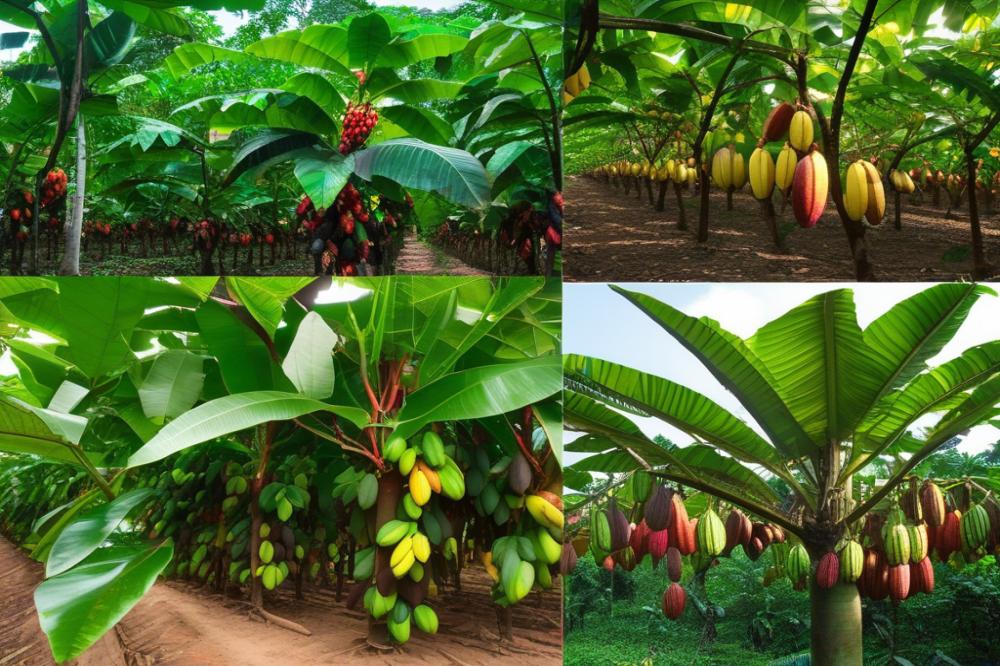
Grafting serves as an important propagation method in cocoa cultivation. This technique involves joining two different plants together to form a single plant. The part of the plant that is inserted into the other is called the scion. The other part is known as the rootstock. This method allows growers to select specific traits they want to promote in the cocoa tree growth.
Different Grafting Techniques Used in Cocoa Cultivation
Several grafting techniques exist for cocoa cultivation. The whip and tongue graft is commonly utilized. This method involves cutting both the scion and the rootstock at an angle. Another technique is the cleft graft, where a cut is made in the rootstock to insert the scion. Bud grafting is also practical since it only requires a bud from the plant instead of a whole scion. Each technique has its own advantages and suitability depending on the conditions.
Benefits of Grafting Over Seed Propagation
Grafting offers several benefits over planting cocoa seeds. First, trees grown from grafts tend to mature faster. They also produce more uniform and higher-quality cocoa beans. Additionally, grafted plants often have stronger resistance to diseases and pests. These factors can significantly improve cocoa production rates for farmers. Seed propagation, while natural, can lead to genetic diversity which may not always be beneficial for consistent yields.
Nursery Management and the Role of Grafting in Plant Breeding
Nursery management plays a critical role in the successful application of grafting. Proper care ensures that the grafted plants develop well. Nutrient management and irrigation are essential. Grafting is vital in plant breeding, as it enables the introduction of favorable traits into new varieties. This technique helps maintain genetic diversity while focusing on productivity.
Case Studies Showing Success of Grafting in Cocoa Production
Success stories are found across the globe. One case in West Africa showcases how farmers significantly increased their yields after adopting grafting techniques. By replacing older, less productive trees with high-yielding grafted ones, the results were impressive. Another example can be seen in South America, where the adoption of specific grafting methods led to enhanced disease resistance. These case studies exemplify the potential of grafting in improving cocoa cultivation practices.
Comparative Analysis: Seeds vs. Grafting
The choice between using cocoa seeds and grafting techniques can significantly shape a farmer’s experience. Both options play vital roles in cocoa tree growth and have distinct advantages. Understanding these differences is essential for those involved in cocoa production.
Comparison of Cocoa Seeds and Grafting Techniques
Cocoa seeds can be sown directly into the soil. This method promotes genetic diversity, as it produces offspring with varying traits. On the flip side, grafting techniques allow farmers to combine the strengths of different plants. This method typically involves attaching a scion from a desired tree to a compatible rootstock. Grafting may provide trees that are more resilient.
Impact on Growth Rates, Yield, and Disease Resistance
Growth rates can vary dramatically between the two methods. Seed-grown trees tend to take longer to mature. In contrast, grafted plants often bear fruit earlier, leading to quicker yields. Additionally, grafted trees may display improved disease resistance. This resilience can be crucial in areas prone to pests and diseases that affect cocoa.
Cost-Effectiveness of Each Method in Cultivation Practices
Cost is another factor to consider in cultivation practices. Growing from seeds generally requires lower initial investment. Seedlings can be produced with relative ease and at a reduced cost. However, grafting often yields higher prices due to its enhanced traits. This method might necessitate more resources upfront but can lead to superior returns over time.
Discussion on Selecting Appropriate Propagation Methods Based on Goals
Selecting the right propagation method depends largely on specific objectives. For those focused on maintaining genetic diversity, seeds might be the best choice. Conversely, farmers aiming for quicker results and higher disease resistance should consider grafting. Nursery management can also impact these decisions. Understanding one’s goals in plant breeding will guide the selection of the most suitable technique.
Future Trends in Cocoa Propagation
Emerging Horticultural Techniques and Innovations
New methods in horticulture are changing how farmers grow cocoa. Scientists are exploring advanced propagation methods that might improve plant health. Innovative approaches could lead to faster results in cocoa tree growth. Techniques that combine traditional grafting with modern science are gaining attention. Farmers are hoping these innovations can boost overall yield.
Role of Technology in Improving Propagation Methods
Technology plays a significant role in enhancing cocoa cultivation practices. Smart sensors now help monitor soil and water conditions more effectively. These tools allow for precise adjustments in nursery management. Additionally, DNA sequencing is becoming useful in plant breeding. This technology helps identify the best varieties for propagation. As a result, farmers can select seeds with stronger traits.
Importance of Maintaining Genetic Diversity in Future Cocoa Production
Genetic diversity is vital for sustainable cocoa production. A varied gene pool helps trees resist diseases and adapt to climate change. Without diversity, the industry risks devastating losses from pests. Moreover, farmers are beginning to realize the benefits of growing different cocoa varieties. Mixing plants not only enhances production but also improves flavor. Many experts agree that maintaining this diversity is crucial for the future of cocoa.
Final Thoughts on Cocoa Cultivation
In evaluating the best methods for expanding cocoa production, a few key points stand out. Growing cocoa from cocoa seeds allows for genetic diversity but requires patience and careful nurturing. On the other hand, grafting techniques enable farmers to produce trees that bear fruit faster, promoting consistency in crop quality. Each method has its pros and cons, and understanding these can impact overall success.
Choosing the right propagation method is crucial in today’s environmentally conscious world. Cultivators must consider both the short-term yields and the long-term health of their land. Sustainable practices help maintain balance in ecosystems while also meeting market demands. Making informed choices helps protect growers’ livelihoods and nourish communities globally.
Readers who are interested in cocoa cultivation should explore these options further. Engaging with local agricultural experts can provide personalized advice suited to specific conditions. Farmers and enthusiasts alike can contribute positively to sustainability. The future of cocoa cultivation rests on the decisions we make today.

